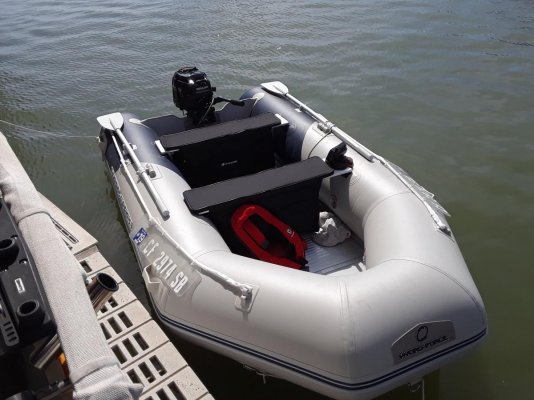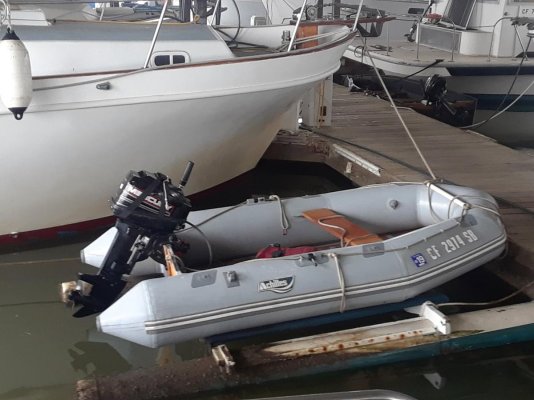Bill V
Senior Member
- Joined
- Nov 14, 2020
- Messages
- 191
- Vessel Name
- Joint Venture
- Vessel Make
- 1978 GlasPly 2800 mid cabin
I have used a Caribe 9.5 ft. for the past 5 years but I finally sold it because it was really too big & heavy for my needs. Wife and I were only ones that ever were in it and was rated for 4 people. I have two outboards that I have used, 4.5hp Mercury and a 7.5hp Mercury, both 2 strokes. Looking for a RIB, either fiberglass or aluminum hulled. Would like a bow locker and be in the 8 foot length range if possible. Price is secondary, length, weight and bow locker are primary. PVC or Hypalon is something I know little about but need something that will last in PNW waters and exposed to sunlight about 5 months a year. It will be carried from my custom built dinghy davit booms rated for 350# and towed at 5-7 knots about 30% of the time.. Any suggestions from the experts?




 ),handles well, very stable, fair value for $. Handling characteristics can vary, and they matter too. They make (or did make) hypalon versions too.
),handles well, very stable, fair value for $. Handling characteristics can vary, and they matter too. They make (or did make) hypalon versions too.